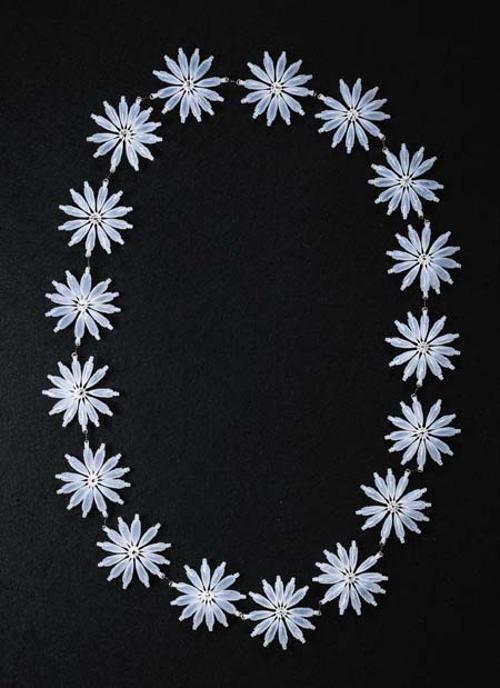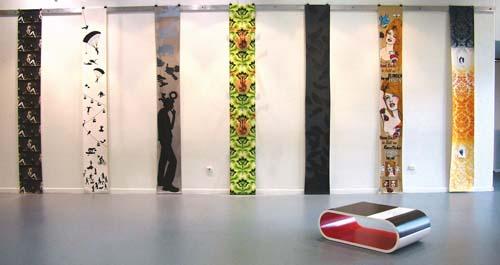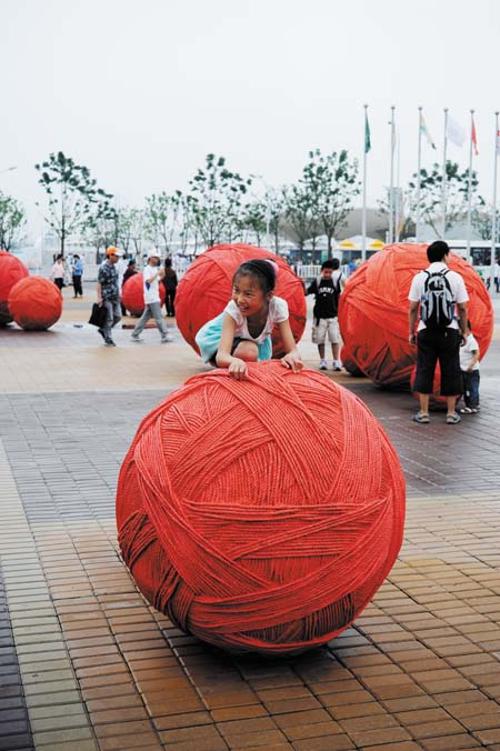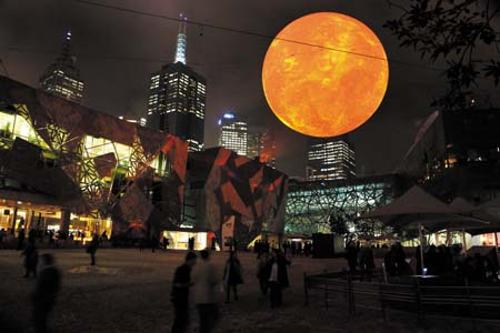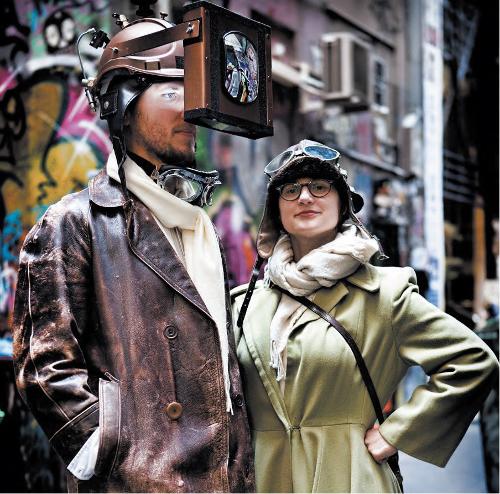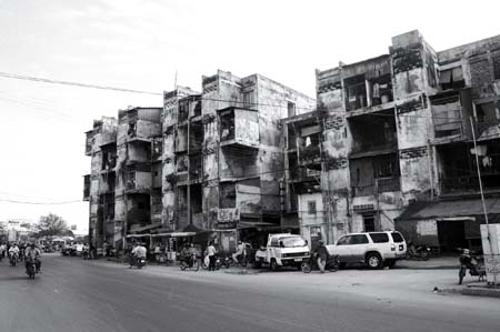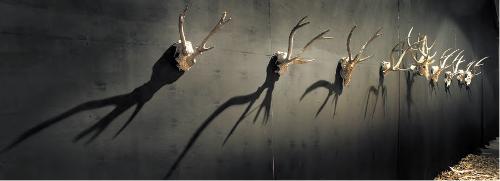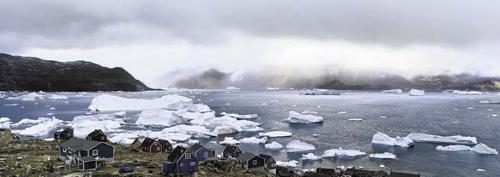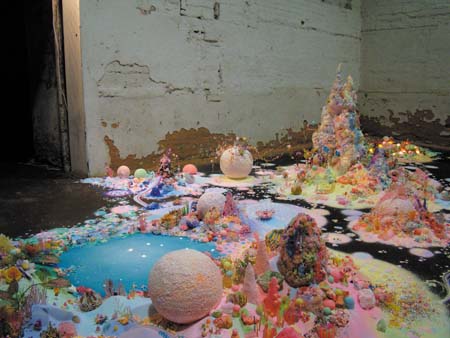
'duetto' closed literally, expansively with a duet, 'the universe as mirror'. On the night of the partial lunar eclipse, self-contained at opposite ends of the vaulted central hall of the Queen's Theatre, two players (Domenico de Clario and Stephen Whittington, director of the Electronic Music Unit, Elder Conservatorium) accompanied the rising, full moon (from precisely 5.10 until 9.31pm) as it journeyed towards its apogee, that point in its orbit most distant from the earth. Mulled wine, bread and cheese and a certain quiet, distanced introspection attended, after a day of articulation, both formal and informal, following Jude Walton and Aleks Danko as they presented a series of spoken word poems at various sites around the Adelaide Botanic Gardens, ending in conversation with Linda Marie Walker at the Theatre. Artists, audience and facilitators each kept their own company during this final performance, still within the spacious improvised soundscape, bodies warmed together, dispersed, progressively peeling (silent, opened) to the evening.
'duetto' was a multi-venue project played out within and between two, 'duo’ installation venues: the clean white spaces of the aeaf and the vast, dank halls of the old Queen’s Theatre. There were related events - a staged game that simultaneously deconstructed and celebrated the beauty of soccer, and an engrossing – formally, aesthetically, emotionally exhilarating – afternoon screening of 'the room of chromatic mystery' sampled from Corinne and Arthur Cantrill’s fifty year collaboration in experimental film (announced by the curator as the inspirational heart of the project). 'duetto', rich and complex, addressed the struggle: the productive, sometimes intoxicating, sometimes uncomfortable tension, the generative ‘alchemy’ that attends the definition of ‘creative identity, within the sometime inhibiting parameters of shared engagement in a life’. I saw the aeaf installation first. The screening wall bore a small work: two used toothbrushes bristle to bristle, metaphorically evoking the heady claustrophobia of coupling and metonymically suggesting both the durational intimacy of Alfredo and Isabel Aquilizan’s domestic life and their wider, socially engaged practice. Online, the media release shows their 1999 work in which used toothbrushes covered the floor of the Asian Art Museum, in Fukuoka, a wooden pathway allowing a bird’s-eye perspective. The indexical nature of the Aquilizan’s contribution, its evidential trace of implied community is iconic. Each of 'duetto’s' invited works offered a suggestive opening to its generational context.
In both venues I was lost (compelled, engrossed, touched and provoked by turn) in the particularity and poetry of each contribution: way too many to mention. Fragments persist in my memory – pip and pop’s ‘paradisiacal’ sugar installation sprawls, its accumulation a jointly constructed, short-lived and lovely memorial to the transformative possibility of play, the joys of self loss, of imaginative experiential merger between self and world, between artists, between viewer and work. A shared sense of transformation in the ‘third’ space of reciprocity – kindness – was also poetically evoked in Gregory Burgess and Pip Stokes’ beeswax works. The play enacted in the work of mother/daughter pair, Elizabeth Presa and Anastasia Klose, is darker, vacillating evocatively between the simple ‘silly’ fun of a shared, recorded journey and the generational asymmetry of the experience: the shifts between a bored daughter’s perseverance and her responsive laughter imbuing the recording with a perceptible sense of ‘melancholy and anxiety’. The twinned monitors tracking partners Janine Antoni and Paul Ramirez Jones, one stepping into the other’s footprints, share a tonal, rhythmic physical/emotional recognition of merger with the work of twins Gabriella and Silvano Mangano: mesmerising syncopations of mirrored movements underscored by gentle, yet insistently compulsive percussive notes as interruption, as undertone.
Other collaborations, proffering note-taking and documentation over/against outcome, varied widely, wildly in tone: from the serene grace of Angela and Hossein Valamanesh’s working drawings and models, to Janet Burchill and Jennifer McCamley’s exercises in identification and immolation. Tony Birch with Tom Nicholson showed a framed mid-city performance still and text 'The Ngamajet', a lyrical pairing calling upon a felt affinity, experienced in the red tones of the setting sun touched upon by a shared recognition of Indigenous sovereignty. Alex Rizkalla and Julie Davies also showed a paired set of glass-fronted boxes each containing exquisitely crafted wooden objects – props and prostheses – each strange, spare screen of ‘canes’ foregrounding and echoing the vertical thrust of its forested, photographic backdrop (a miniaturised figure just visible, immersed, mid-ground in one image). 'Satoyama' was made during a residency in the mountainous rice-growing region of Niigata in Japan. Suspended entranced at the threshold of another’s world, I feel my own separation mirrored and amplified by the adjacent video loop which endlessly repeats the landscape point of view, shot from behind the shielding window of a fast moving train.

